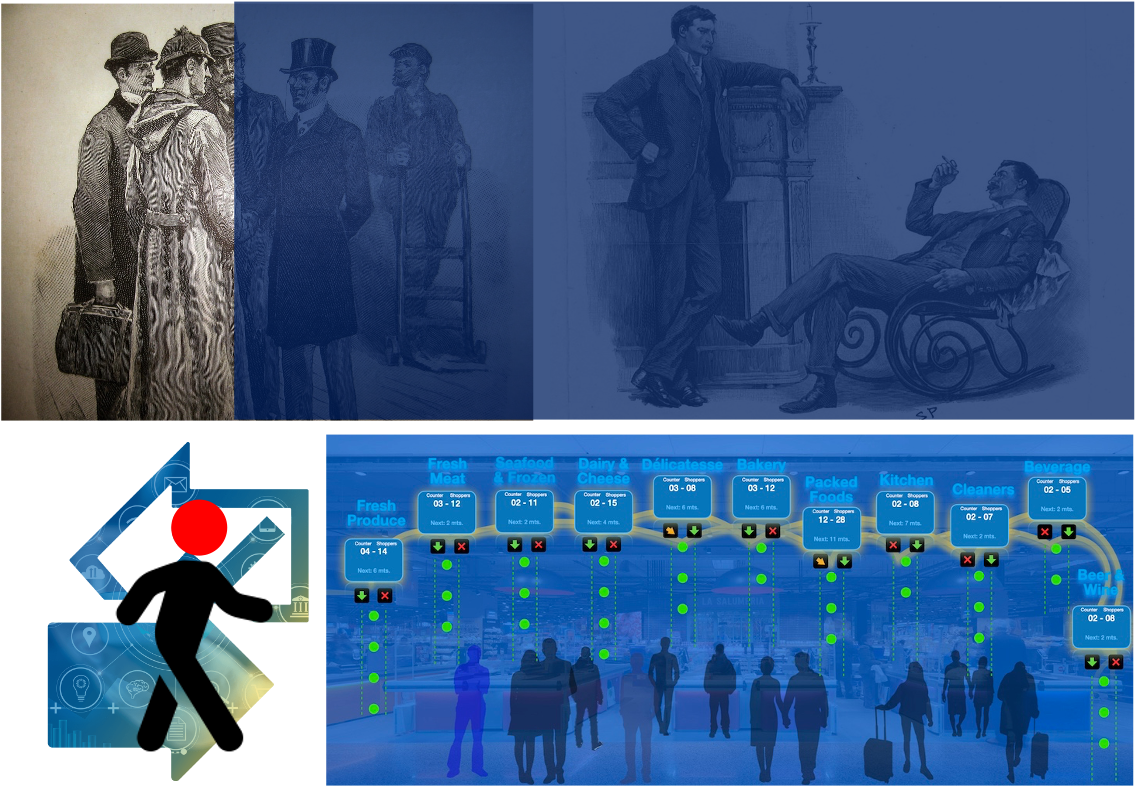Research

Explicit and Tacit knowledge Representation
Randall Davis, Howard Shrobe and Peter Szolovits [MIT AI Lab] writes:
“A knowledge representation (KR) is most fundamentally a surrogate, a substitute for the thing itself, used to enable an entity to determine consequences by thinking rather than acting, i.e., by reasoning about the world rather than taking action in it”
“It is a fragmentary theory of intelligent reasoning, expressed in terms of three components: (i) the representation’s fundamental conception of intelligent reasoning; (ii) the set of inferences the representation sanctions; and (iii) the set of inferences it recommends”
“It is a medium for pragmatically efficient computation, i.e., the computational environment in which thinking is accomplished. One contribution to this pragmatic efficiency is supplied by the guidance a representation provides for organizing information so as to facilitate making the recommended inferences”
“It is a medium of human expression, i.e., a language in which we say things about the world.”
The centerpiece of our approach is the recognition that creating new knowledge is not simply a matter of “processing” objective information. Rather, it depends on tapping the tacit and often highly subjective insights, intuitions, and hunches of individual employees and making those insights available for how to distill objective and transferable, or “explicit,” knowledge from tacit knowledge; and ensuring that explicit knowledge is translated back into tacit knowledge that will then go on to yield yet another innovative solution.
New knowledge always begins with the individual. A brilliant researcher has an insight that leads to a new patent. A middle manager’s intuitive sense of market trends becomes the catalyst for an important new product concept. A shop-floor worker draws on years of experience to come up with a new process innovation. In each case, an individual’s personal knowledge is transformed into organizational knowledge valuable to the company as a whole.
Tacit knowledge consists partly of technical skills – the kind of informal, hard-to-pin-down skills captured in the term “know-how.” A master craftsman after years of experience develops a wealth of expertise “at his fingertips.” But he is often unable to articulate the scientific or technical principles behind what he knows.
In the act of creating, people argue. They have heated dialogue. They get upset! Without real exchange, you can’t create knowledge. Knowledge creation is a human activity

At the same time, tacit knowledge has an important cognitive dimension.
From tacit to explicit [Externalization]: When a worker is able to articulate the foundations of her tacit knowledge, he or she converts it into explicit knowledge, thus allowing it to be shared with more than one individual or a team. Another example might be the auditor who, instead of merely compiling a conventional financial plan for his company, develops an innovative new approach to budget control based on his own tacit knowledge developed over years in the job.
From explicit to explicit [Combination]: An individual can also combine discrete pieces of explicit knowledge into a new whole. For example, when an auditor of a company collects information from throughout the organization and puts it together in a financial report, that report is new knowledge in the sense that it synthesizes information from many different sources.
From explicit to tacit [Internalization]: What’s more, as new explicit knowledge is shared throughout an organization, other employees begin to internalize it – that is, they use it to broaden, extend, and reframe their own tacit knowledge. The auditor’s proposal causes a revision of the company’s financial control system. Other employees use the innovation and eventually come to take it for granted as part of the tools and resources necessary to do their jobs.
From tacit to tacit [Socialization]: Sometimes, an individual shares tacit knowledge directly with another. Put another way, the person is “socialized” into the craft. But on its own, socialization is a rather limited form of knowledge creation. True, the apprentice learns the master’s skills. But neither the apprentice nor the master gains any systematic insight into their craft knowledge. Because their knowledge never becomes explicit, it cannot easily be leveraged by the organization as a whole.

In specifying a representation, we also need to say something about how to reason intelligently. Representation and reasoning are inextricably and usefully intertwined: A knowledge representation is a theory of intelligent reasoning. This theory often results from observation of human behavior. Minsky’s original exposition of frame theory, for example, offers a clear example of a set of recommended inferences inspired by observing human behavior. Consider the following statement from Minsky’s abstract to his original frames paper:
This is a partial theory of thinking…. Whenever one encounters a new situation (or makes a substantial change in one’s viewpoint), he selects from memory a structure called a frame; a remembered framework to be adapted to fit reality by changing details as necessary.
A frame … [represents] a stereotyped situation, like being in a certain kind of living room, or going to a child’s birthday party.
The first sentence illustrates the intertwining of reasoning and representation: it announces at the outset that it is also about thinking. In turn, this theory arose from an insight about human intelligent reasoning, namely, how people might manage to make the sort of simple common sense inferences that appear difficult to capture in programs. The theory singles out a particular set of inferences to recommend, namely, reasoning in the style of anticipatory matching.
Non-monotonic reasoning is one of the original areas of knowledge reasoning and a driving force behind its early development. It remains a major area of knowledge reasoning today. Unlike other areas of knowledge reasoning, such as reasoning about action, description logics and response or expected response, or choice-reward, non-monotonic reasoning is not focused on any particular knowledge representation language or any particular application domain. Rather, it concerns a major aspect of common sense reasoning, that of reasoning (and acting) based on incomplete information by “filling in the gaps” of this missing information in some fashion. In such cases, when additional information becomes available, it is natural that some conclusions that have been reached earlier must be withdrawn.
Classical inference systems are designed to derive new information only when the reasoning that leads to them is iron-clad and cannot be invalidated when new facts become known. More formally, classical reasoning is monotone, that is, a conclusion derived from a set of facts remains a conclusion when this set of facts is enlarged. Defeasibility of human common sense reasoning when complete information is not available (Clique and Cavity described in Cognitive Framework) means that new information may render invalid some of the conclusions obtained in its absence. Therefore, common sense reasoning requires a logic as its natural formal expression, a logic whose inference mechanism lacks the monotonicity property that classical inference systems have.
